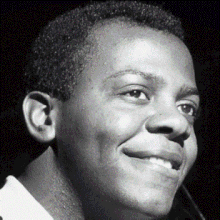Larry_Young_(musician)
Larry Young (musician)
American jazz organist
Larry Young (also known as Khalid Yasin [Abdul Aziz]; October 7, 1940 – March 30, 1978)[1] was an American jazz organist and occasional pianist. Young's early work was strongly influenced by the soul jazz of Jimmy Smith, but he later pioneered a more experimental, modal approach to the Hammond B-3.[2]
This article needs additional citations for verification. (January 2020) |
Larry Young | |
|---|---|
 | |
| Background information | |
| Also known as | Khalid Yasin |
| Born | (1940-10-07)October 7, 1940 Newark, New Jersey, U.S. |
| Died | March 30, 1978(1978-03-30) (aged 37) New York City, New York, U.S. |
| Genres | |
| Occupation(s) | Musician, songwriter |
| Instrument(s) | Organ |
| Labels | Blue Note |
Born and raised in Newark, New Jersey, United States, Young attended Newark Arts High School, where he began performing with a vocal group and a jazz band.[3] He was also the cousin of the drummer Jimmie Smith.[4]
Young played with various R&B bands in the 1950s, before gaining jazz experience with Jimmy Forrest, Lou Donaldson, Kenny Dorham, Hank Mobley and Tommy Turrentine.[1] Recording as a leader for Prestige from 1960, Young made a number of soul jazz discs, Testifying, Young Blues and Groove Street.[1] When Young signed with Blue Note around 1964, his music began to show the marked influence of John Coltrane.[1] In this period, he produced his most enduring work. He recorded several times as part of a trio with guitarist Grant Green and drummer Elvin Jones,[1] who were occasionally augmented by additional players. Most of these albums were released under Green's name, though Into Somethin' (with Sam Rivers on saxophone) became Young's Blue Note debut.[1] Unity, recorded in 1965, remains his best-known album; it features a front line of Joe Henderson and the young Woody Shaw.[1] Subsequent albums for Blue Note (Contrasts, Of Love and Peace, Heaven On Earth, Mother Ship) also drew on elements of the 1960s avant-garde and utilised local musicians from Young's hometown of Newark. Young then became a part of some of the earliest fusion groups: first on Emergency! with the Tony Williams Lifetime (with Tony Williams and John McLaughlin) and also on Miles Davis's Bitches Brew.[1] His sound with Lifetime was made distinctive by his often very percussive approach and regular heavy use of guitar and synthesizer-like effects. He is also known for a jam he recorded with rock guitarist Jimi Hendrix, which was released after Hendrix's death on the album, Nine to the Universe.
In March 1978, he checked into a hospital for stomach pains.[5] He died there on March 30, 1978, while being treated for what is said to be pneumonia.[6] However, the actual cause of his death is unclear.[2][7]
As leader
- Testifying (New Jazz, 1960)
- Young Blues (New Jazz, 1960)
- Groove Street (Prestige, 1962)
- Into Somethin' (Blue Note, 1965) – rec. 1964
- Unity (Blue Note, 1966) – rec. 1965
- Of Love and Peace (Blue Note, 1967) – rec. 1966
- Contrasts (Blue Note, 1968) – rec. 1967
- Heaven on Earth (Blue Note, 1969) – rec. 1968
- Lawrence of Newark (Perception, 1975) – rec. 1973
- Fuel (Arista, 1975)
- Spaceball (Arista, 1976)
- The Magician (Acanta/Bellaphon, 1977)
- Mother Ship (Blue Note, 1980) – rec. 1969. LT series.
- Larry Young in Paris: The ORTF Sessions (Resonance, 2016) - rec. 1964–65 for French radio[8]
As sideman
|
With Miles Davis
With Grant Green
With Gildo Mahones
With John McLaughlin
With The Tony Williams Lifetime
|
With others
|
- Colin Larkin, ed. (1992). The Guinness Who's Who of Jazz (First ed.). Guinness Publishing. p. 441. ISBN 0-85112-580-8.
- "Larry Young | Biography & History". AllMusic. Retrieved August 3, 2021.
- Original linear notes from Larry Young's Groove Street
- "Jazz news: Larry Young: 1964-65". News.allaboutjazz.com. 14 March 2016. Retrieved August 3, 2021.
- "Larry Young's Self-Questioning Jazz". The New Yorker. 8 March 2016. Retrieved August 3, 2021.
- "Young, Larry Jr. (Khaled Yasin) – Jazz News". 27 December 2014. Archived from the original on 2014-12-27. Retrieved August 3, 2021.
- "Larry Young | Album Discography". AllMusic. Retrieved August 3, 2021.
- Lass, Don (February 10, 1974). "Record Previews: Lawrence of Newark". Asbury Park Press.
- News staff (September 10, 1975). "A Bright New Jazz Organist Emerges". New York Amsterdam News.
- Larry Young discography at Discogs
- 'Unity: Larry Young and Black Music, from Soul Jazz to Free to Fusion' at Point of Departure